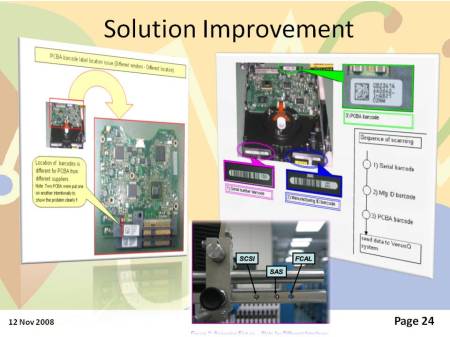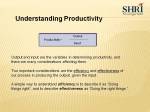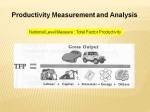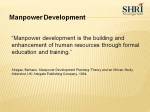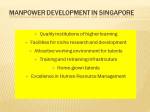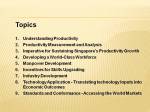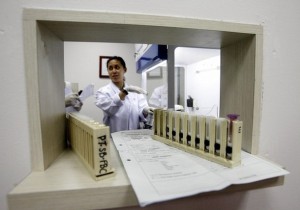I have often been approached by managers wanting me to tell them whether TBPS is a system suitable for their company. Here I have devised 13 simple statements for you to evaluate your company.
Answer them and if you come off short, it simply means that some coaching and training for your colleagues would be good to come up to speed.
As with all the companies I have given assistance; the benefits far outweigh the cost in terms of time and other upfront preparation. Instead of having to revert when you encounter the problems with TBPS implementation midway through the scheme; I have compiled these statements for you to do a self review on whether your company is suitable:
Take this Self-Assessment Quiz
The decision to implement a TBPS scheme should be based on more than schedules, finances, or convenience. The following questionnaire will help you evaluate your company’s potential to be a successful TBPS company.
Just response with True or False, there is a simple assessment of your responses at the end.

TBPS projects benefits both the team members as well as improve the productivity fo the company
1. The company has a basic believe to train employees in problem solving skills.
Your Answer : TRUE [ ] FALSE [ ]
True. This is essential. The company can’t be effective in TBPS unless there is easy access to basic training on the essentials of problem solving methodology. A common language must permeate throughout the company’s definition of what a problem is, what a solution is, how implementation and review are to be carried out and who are involved in the process at what stage of the project. The training course(s) on problem solving should be woven into their company’s general commitment to training policy. Training should be done right from the time an employee joints the ranks.

TBPS approaches a problem with the context in perspective
2. The company has a good basic leadership structure (method for appointment of leaders; assistant leaders and members are established)
Your Answer : TRUE [ ] FALSE [ ]
True. Management will save a lot of stress and time if they have developed and stnadardised a basic structure of leadership appointment and membership recruitment. The success of the first project depends a lot on the basic identification of the leaders and the chosen project leaders must be able to command the confidence of the team members; whilst the members should also know how to reciprocate with support.

3. Company is goal oriented.
Your Answer : TRUE [ ] FALSE [ ]
True. Since a good deal of the projects are meant for enhancing the overall contribution to the productivity of the organization, there must be a certain clarity on the theme and goals of productivity. Some companies have Key Performance Indicators as their first guideline to define the company goal. The bottom line? Until the management define what they want the teams will not be able to know what is expected and thus not able to achieve anything. Teams must be able to match their objective to the company’s goal.

This is the Steven Covey 2 x 2 Matrix. Unfortunately, the priority for the TBPS project may land in the yellow quadrant (Not urgent, but important). Unless the team plans for it that project may drop into quadrant 4!
4. Time management is a priority.
Your Answer : TRUE [ ] FALSE [ ]
True. The ability to manage time well may be the most important skill a team can possess. Procrastination is the worst enemy of the project. A good team should be able to set goals and priorities, have a plan for achieving them, and follow through. There is no substitute for good time management skills.

The team must have some sense of empowerment to carry out basic decision.
5. Teams are autonomously organize for their respective work responsibilities; they are given (1) a ‘block of time’ for their project activities and (2) a different ‘block of time’ for routine or operational tasks.
Your Answer : TRUE [ ] FALSE [ ]
True. While most teams would choose projects for the improvement of their work area, it is important that team members carve out blocks of time for their project activities, separating the time required for their routine and operational work. Operational work is important to sustain the output at the minimum level, but the team must be given or allocated time during working hours to be engaged in creative project activities. Most teams will find the project time consuming at some stage of the project. All projects will require the leaders as well as the members put in some uninterrupted time each week to complete specific project task.

The team must have a respect for deadlines. TBPS Projects are designed with timelines in mind. Success of the project is tied to others. Although it may seem that the projects are the less urgent, finishing ontime is still a success criteria
6. Teams have no problems meeting deadlines.
Your Answer : TRUE [ ] FALSE [ ]
True. Supervisors are usually adamant about deadlines. If a team leader (or a majority of the members) is a habitual procrastinator, TBPS projects may not be appropriate for the team.
7. Teams will need guidance from the supervisor for many of its decisions from time to time.
Your Answer : TRUE [ ] FALSE [ ]
True. While training and coaching on problem solving skills are often offered to leaders and team members so that they can grasp the fundamentals of team based problem solving, additional counselling, guidance and advice will still be needed. Management must not assume that the work must be done autonomously. If the team leader finds it difficult to proceed he should be comfortable to approach his supervisor(s) to make some of the decisions at any stage of the project.

You need not be Bill, but his self-starter attitude is something we can learn from. I have seen projects that have made more then $500k in six months, which I think was better than what Bill achieved in his first 6 months!
8. The good team leader is a natural self-starter who can attempt a task after receiving basic expectations, targets to achieve.
Your Answer : TRUE [ ] FALSE [ ]
True. A truly good team leader is able to get started on a project independently. More important, effective team leaders do not get greatly “disturbed” by problems but search out answers and struggle with them for a reasonable time before contacting their supervisors.

9. Teams learn well by discussion and experimentation.
Your Answer : TRUE [ ] FALSE [ ]
True. Many solutions are found by trial and error, but behind the experiments, risk taking have already been mitigated and debated by everyone before the team takes any step forward. Team members take the responsibility for failures and ensure that even if the risk are big, it should not be too big for the supervisor to handle. That is why discussion and experimentation is taken in small steps; and these steps may be in new or radical direction.

If you do not know what to do next, go back to the question of : What is the worst that can happen; what is the maximum lost possible. Can the team live with that? If we lost can we make a come back?
10. Team members understand exactly what they are going to achieve.
Your Answer : TRUE [ ] FALSE [ ]
True. If the team is going to take responsibilities, they should know the risks; and that comes with knowing with certainty what they are to achieve and if they do not achieve, what kind if risks to expect. This way they exercise critical analysis throughout the project.

11. Team members are proficient in communication.
Your Answer : TRUE [ ] FALSE [ ]
True. Whether through written or spoken communication, members are expected to communicate their ideas, concerns and express their views with passion and intensity when the need arises. Although it is desirable for rigorous debating session to be held during some team meetings, the leaders must be able to consolidate views and opinions in amicable directions for the next step to be taken.

Never leave to chance. Plan the time of 1 – 2 hours a week for your project. That is the only way to make sure it gets going!
12. Team members are willing to devote 1 – 2 hours per week for each project.
Your Answer : TRUE [ ] FALSE [ ]
True. One myth about TBPS project is that as long as we have 80% attendance, the meeting should proceed and everything will be fine, for the absentee will catch up later. This should not be encouraged. Most members who are responsible would find that besides the meeting engagements, they will also put in more time in order to carry out his/her assigned task during the meeting. Therefore, at a minimum, members must have approximately 4 hours per week per project that to concentrate on the project.

13. Team members are am willing to discuss the project with other colleagues outside the team proper.
Your Answer : TRUE [ ] FALSE [ ]
Mostly True. Most projects are not necessarily independent and confidential studies. Some parts of the project may encroach into other divisions. Many projects will require other colleagues to provide information, support and also endorsement during the experiments as well as during the course of implementation. Therefore communication with colleagues outside the project team is often necessary. Team members would do well to regularly discuss internally (intra-team) on how to effectively communicate with colleagues outside the project team; and even how to engage the correct people and level of participation of people outside the team.
Now rate your success. Count the number of “True” you gave as you read the statements and compared against the actual situation you have back in your company.
8 to 10: Your company is probably a good candidate for TBPS.
Less than 8: You should consider some external assistance.
